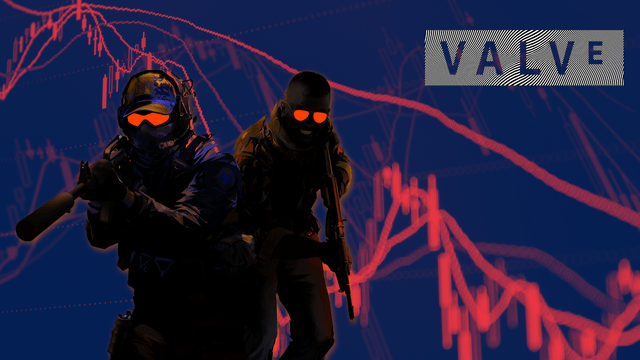Counter-Strike 2 Skin Market Meltdown: $3 Billion Vanishes Overnight
Imagine owning a digital gun skin worth more than a decent car. Now imagine that skin, and potentially your entire collection, losing a significant chunk of its value overnight. This isn’t a dystopian nightmare; it’s precisely what happened to many Counter-Strike 2 (CS2) players recently, as a market correction sent shockwaves through the game’s lucrative skin economy.
Reports indicate that the once-booming $6 billion Counter-Strike 2 skin market experienced a staggering $3 billion loss in value in a single day. This dramatic crash wasn’t due to waning interest in the game itself, but rather a complex interplay of factors triggered by a specific game update. Let’s delve into the details of this virtual financial crisis.
The Catalyst: Game Update and Inventory Concerns
The primary culprit behind the market collapse seems to be a game update that addressed certain issues within CS2. While the specifics of the update are complex, the core problem revolved around the handling of item inventories, particularly those with excessively large collections. Rumors spread quickly, fueled by player experiences, that the update was causing issues with skin ownership and display. Some reported skins disappearing, while others struggled with glitches affecting their inventories.
This uncertainty, coupled with fears of potential data loss or asset corruption, sent players into a panic. Naturally, the first reaction was to sell their skins, regardless of price, in an attempt to salvage whatever value remained. This mass exodus from the market flooded it with supply, drastically driving down prices across the board.
Panic Selling and Market Oversaturation
The initial fears surrounding inventory issues quickly snowballed into a self-fulfilling prophecy. As more players rushed to sell their skins, prices plummeted. This drop in value further fueled the panic, creating a vicious cycle where more people sold, driving prices even lower. The market, already potentially inflated, couldn’t handle the sudden influx of skins, leading to a significant and rapid correction.
The most valuable skins, typically those with rare patterns or low float values, experienced the most dramatic price drops. Items that were once considered investments, fetching thousands or even tens of thousands of dollars, suddenly lost a substantial portion of their value. This left many players, particularly those who had invested heavily in skins as a form of digital asset, facing significant financial losses.
The Role of Speculation and Market Manipulation
It’s important to acknowledge that the Counter-Strike skin market has always been susceptible to speculation and, in some cases, manipulation. High-value skins are often treated as commodities, with prices driven by perceived rarity, demand, and collector interest. This inherently makes the market volatile and prone to dramatic fluctuations.
Rumors, whether true or false, can have a significant impact on skin prices. The update served as a trigger, but the underlying vulnerability of the market, fueled by speculative investment and the potential for manipulation, amplified the effects. It’s entirely possible that some opportunistic players took advantage of the panic to buy up skins at bargain prices, further exacerbating the price drops for others.
The Steam Community Market and Third-Party Sites
The Counter-Strike skin market exists both within the Steam Community Market and on various third-party websites. While Steam provides a regulated environment for buying and selling skins, these external platforms often offer greater flexibility and anonymity. However, they also come with increased risks, including potential scams and price manipulation. The recent market crash affected both the Steam Community Market and these third-party sites, highlighting the interconnectedness of the CS2 skin economy.
The Aftermath and Future of the Skin Market
The immediate aftermath of the crash has left many players reeling, with some questioning the long-term viability of investing in virtual items. While the market is likely to recover to some extent, the event serves as a stark reminder of the risks involved in speculative investments, particularly in the volatile world of digital assets.
Valve, the developer of Counter-Strike 2, will need to address the concerns raised by the update and reassure players about the security and stability of their inventories. Transparency and communication will be crucial in restoring confidence in the skin market. Moving forward, players should exercise caution and conduct thorough research before investing significant sums of money in virtual items.
The CS2 skin market crash is a cautionary tale about the complexities and risks of virtual economies. While the potential for profit is undeniable, it’s essential to remember that these markets are inherently volatile and susceptible to unexpected events. Whether this is a temporary dip or the start of a bigger trend remains to be seen, but one thing is clear: the world of Counter-Strike skins is a wild ride.
